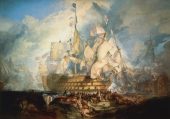
Major advancements in body-worn technology are set to enhance the operational effectiveness of UK soldiers, integrating cutting-edge tools and technology to improve
battlefield capabilities.
The next generation of body-worn technology has been rigorously tested by British soldiers, offering a modernized edge on the battlefield. These trials are part of the government's broader initiative to integrate advanced technologies into military equipment, aiming to boost battlefield awareness and facilitate quicker tactical decisions.
This effort aligns with the new government's commitment to acquiring state-of-the-art defense technologies, as outlined in the recent Strategic Defence Review. The Future Soldier programme, which was launched this week, focuses on adapting military equipment to meet evolving needs.
Among the technologies under review are laser detection systems that alert soldiers if they are being targeted, drone thermal detection to spot enemies, and ground sensors that monitor enemy movement and send alerts to wearable systems.
These digital systems are standardized yet customizable, tailored to fit specific mission requirements. Soldiers from the 2nd Battalion, The Royal Anglian Regiment, based in Leicestershire, have tested advanced data visualization tools, integrated sensors, and live intelligence feeds, all within a unified system.
The trials, conducted by scientists from the Defence Science and Technology Laboratory (Dstl), have shown that even minor adjustments to infantry tactics using Command and Control, Communications, Computing, and Information Systems (C4ISR) can significantly enhance operational results.
Key Improvements Include:
Accelerated Battle Tempo: Enhancing the speed of understanding, decision-making, and action to outmaneuver the enemy.
Enhanced Situational Awareness: Providing real-time data on friendly and enemy forces and other assets to improve decision-making.
Advanced Decision-Making: Enabling soldiers to transmit data, such as images and video, to broader teams.
Maria Eagle, Minister for Defence Procurement and Industry, stated:
"This government is committed to advancing technology that ensures the safety and superiority of the UK Armed Forces. This cutting-edge technology will enhance operational effectiveness and increase battlefield awareness. I welcome the ongoing collaboration between government, industry, and scientists on this innovative programme."
Dstl scientists are conducting this research as part of the Future Integrated Dismounted Soldier Vision (FIDSV), exploring how next-generation "digitally connected soldier" technology can enhance capability and operational advantage.
Technologies Tested Include:
A helmet-mounted strobe alert system for identifying friend or foe.
An electronic beacon system that activates when detecting an incoming laser.
Laser detection systems to alert personnel if they are being targeted.
Systems that detect incoming laser wavelengths and warn the user.
On-person drone control for operating and programming drones.
Drone thermal detection to assist in enemy identification.
Laser range finders for calculating target distance.
Advanced digital optics for weapons, powered through the Picatinny rail.
A smart hub serving as the central power and data supply for all digital devices.
A mesh network enabling radio "hopping" to extend communication range.
Ground sensors to detect movement, with alerts sent to wearable systems.
Dstl chief executive Dr Paul Hollinshead OBE MBA said:
"Dstl is working closely with industry to develop and integrate technologies that will transform our armed forces, making them more capable and lethal.
Building on our decades of expertise, this work is delivering mission success, protecting the nation and helping it prosper".
Jon Russell, Dstl’s Senior Principal Scientist on the research, said:
"This technology will protect the lives of our Armed Forces by improving operational capability by giving them the advantage over the enemy.
It is great to see the Future Integrated Dismounted Soldier Vision is clearly proving how a soldier system containing multiple knowledge capabilities that are designed to combine crucial data to improve operational advantage. Our aim is to develop the most capable armed forces in the world, by merging different technologies to advance battlefield awareness.”
Regimental Sergeant Major (RSM) at the infantry Trials and Development Unit said:
"The trial, led by Dstl, was a showcase of future technologies and digital integration. The research has now advanced, bringing together industry to enhance capabilities with Command, Control, Communications, Computing and Information Systems.
As the Army’s lead in dismounted close combat trials and development, we are at the forefront of improving operational advantage and look forward to supporting its future development".




































